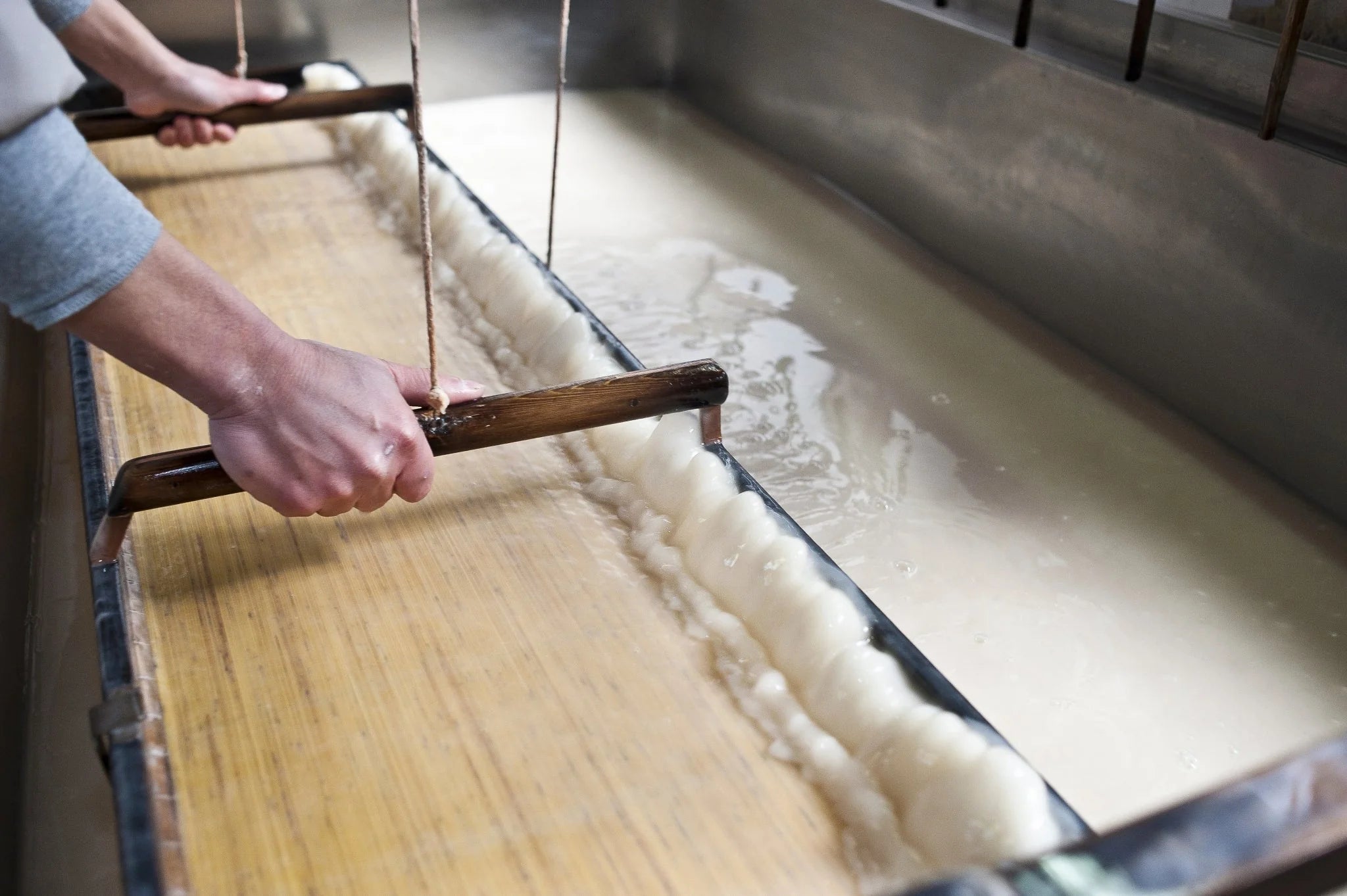
Tosa Washi Paper
Tosa washi paper is Japanese paper made in Ino-cho, Kochi Prefecture, and around Tosa City. Tosa washi is one of the three major types of washi paper, alongside Fukui Prefecture's Echizen washi and Gifu Prefecture's Mino washi. Known for its gentle touch and warm texture, it was designated as a traditional craft in 1976 due to its fine quality.
Tosa washi is characterized by its wide variety, as well as its thinness and durability compared to other types of washi.
Tosa's kozo, or paper mulberry, and pure river water produce thin and strong Tosa washi. The local Niyodo River and the Shimanto River are renowned for their purity, while the kozo produced in the Kochi Prefecture’s mountainous areas is characterized by long fibers that easily intertwine. It is truly a craft produced by nature.
Although the remaining washi production areas throughout Japan produce fewer and fewer varieties, Tosa continues to produce about 300 various types of washi even today.

Rakusui
Rakusui paper is a type of washi in which water is dropped onto the surface of thin paper during production, creating patterns. This type of paper is characterized by its lace-like appearance. The speed of paper-making, which can reach several meters per second, and the intuition of the craftsperson—who adjusts the material mixture by mere grams—are important to create the beautiful swirls of the rakusui pattern. This method of carefully crafting with wisdom and ingenuity is the same today as it was in the past, even with the help of machines.

Sukiawase
Sukiawase is a technique that creates a duplex structure sheet by adding another sheet of washi to the back of rakusui paper.

Its history dates back about 1,000 years. Since the name of Tosa Washi appears in the Engishiki, a set of regulations compiled in the Heian period (794–1185 CE), as an offering, it is thought that washi has been made in the area since that time.
At that time, washi was considered valuable and was used for aristocratic games such as a shell-matching game called kaiawase. As time went by, the use of washi changed, coming into use for samurai kimonos, dolls, feudal clan-issued paper money, and more.
Even in the Edo period (1603–1868 CE), Tosa washi was an important specialty product. It was considered an offering to the shogunate, and was protected by the Tosa Clan.
With the development of new techniques and tools, Tosa became the largest producer in Japan from around 1887 to the beginning of the Showa period (1926–1989 CE), exporting typewriter paper and copying paper.

Makers
Filters


















